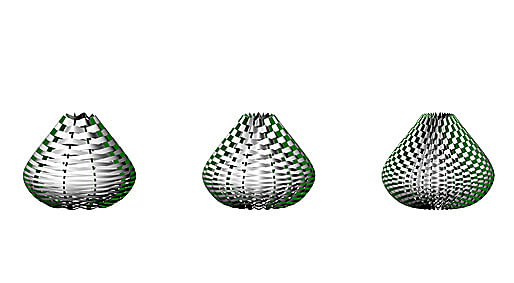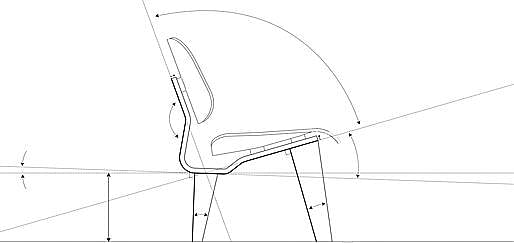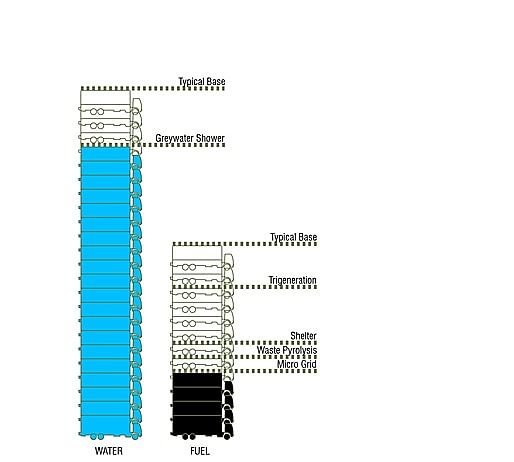
Oct '11 - Feb '12

Here I am in my second and final year it Product Architecture Engineering (PAE). What is Product Architecture Engineering? I get this question every time I mention it and I still haven't figured out the quickest most direct way to describe PAE, which is a large part of the reason I have started this blog.
The program draws a diverse crowd of designers and practitioners starting with architects and civil and mechanical engineers and straying all the way out towards mathematicians, biomedical engineers, naval engineers, computer scientists, industrial designers, and artists. From the PAE website:
The program overcomes longstanding deficiencies in design education by creating a distinctive fusion of design culture and technology through the disciplines of computation, analysis, and advanced production methodologies.
Basically we eat software tools for breakfast. Actually we just sort of gorge on software tools all day every day and for dessert we satisfy our sweet tooth with fabrication tools on occasion. In the first year at PAE we gobbled up Rhino+Grasshopper (and all its glorious plug-ins), Digital Project (Catia), Solidworks, IES, Ecotect, Processing, Arduino, and Mastercam. And when we run out of tools we create our own to satisfy our needs (ie. 1) PAE 810 Interoperability, a class in which we are coding interoperability tools to link and transport data between tools; 2) a DIY CNC Mill that is in planning for fabrication this winter). Its a bit intense and we obviously can't master every piece of software, but the breadth of exposure allows us to 1) pick and choose the tool that fits the job at hand; 2) understand the greater concepts and processes of engineering analysis and computation.

Parametric Grasshopper Weave

Eames Chair Driver Diagrams (thank you Bill)

Parametric Eames Chair (trust me, its parametric)
And what do we use these tools on? Whatever we want. Some students focus on independent design projects such as kayak paddles that mimic whale fins, carbon fiber submersibles, parametric acoustic simulations and parametric bar ware. On the flip side, there has been a strong body of funded research over the 8 years of PAE from projects with SHoP Architects and SOM to more recently a water and energy efficient Forward Operating Base (FOB) for the Department of Defense and a PassivHaus Certified Solar Decathlon house in collaboration with Parsons School of Architecture (and every other department possible at Parsons).
Last year, I participated in the Department of Defense FOB research. The impetus of the project was the high percentage of casualties (10-15%) that occured while trucking fuel and water to operating bases on the front lines. The research was a collaboration with undergraduate engineers at Stevens Institute of Technology. The collaboration of backgrounds allowed us to take a whole systems approach where we could look at all the inputs and outputs (often considered waste, but more often is a useful byproduct) of the camp and started to loop outputs back as inputs where applicable. The end result was a camp that required less convoys of fuel and water and waste out of the camp and thus less casualties.
 Proposed FOB Layout
Proposed FOB Layout

Traditional FOB Consumption

Proposed FOB Consumption
In addition I spent some time working on the Solar Decathlon collaboration between Stevens Institute and Parsons. (http://parsit.parsons.edu/) There were two very interesting and awesome aspects to our design. First off, it was designed and built in collaboration with Habitat for Humanity to be an affordable home that would land in Deanwood D.C. after its two week stint at the Solar Decathlon exhibition. Second, the building was designed according to PassivHaus standards (imported from Germany) to create a highly insulated and air tight structure with some high performance equipment (ie. Heat Recovery Ventilator) that resulted in a close to zero energy home with $2000 in utility bill savings a year. It was definitely an eye opener.
And don't let me forget our studio collaboration with Columbia as part of their Building Intelligence Program. The setup: Columbia MArchs design retrofit components to make existing NYC buildings more efficient and PAE students put the components to test using IES and Ecotect. The result: PAE students constantly banging their heads against the wall trying to figure out how to analyze the crazy shit that Columbia students were coming up with around the clock. Challenging, but I learned a lot about environmental engineering and more importantly, life.

CBIP Retrofit Study: Radiation Maps via Geco (Grasshopper to Ecotect)

CBIP Retrofit Study: Daylight Factor via Geco
On tap for this year:
PAE 810: Interoperability - as mentioned above, coding to create software links and close the design-analysis loop. Check out one of the projects from last year http://open-eco.org/ So far we have spent time recording and writing macros in Catia's vba editor and then in VB.Net. Just this past week we made first contact with excel from Catia via VB.Net. Very exciting! My midterm project will be linking Catia with EnergyPlus which will hopefully lead towards a mini program for schematic level energy modeling for building envelopes running out of either Catia or Grasshopper. Stay tuned for updates on that one. Should be an interesting and head ache inhibiting.
PAE 800: Design Studio - a zero energy prefabricated dining hall as part of a 10 year masterplan for a environmental education camp. So basically its the DOD Forward Operating Base + the Solar Decathlon Passivhaus. Should be a lot of fun.
I'm beat. I haven't written this much since undergrad. Stay tuned. I'll include some more visuals in future posts to update on my work as well as my classmates.
Enjoy your weekend,
Ben
The Product-Architecture Lab at Stevens Institute of Technology is a pioneering graduate program integrating the study of Architecture, Engineering, Product Design, and Interaction. The program focuses on a fusion of design culture and technology through the disciplines of computation, analysis, and advanced production methodologies.
No Comments
Block this user
Are you sure you want to block this user and hide all related comments throughout the site?
Archinect
This is your first comment on Archinect. Your comment will be visible once approved.